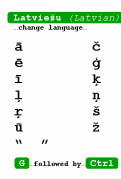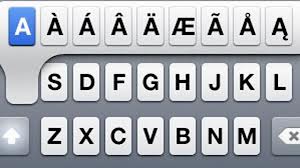In french, there are multiple tenses to express past actions. These notes are on the imperfect, or imparfait, tense.
To form the imperfect tense, drop the -ons ending from the nous form of the present tense. The following chart shows you which endings to add.
To form the imperfect tense, drop the -ons ending from the nous form of the present tense. The following chart shows you which endings to add.
| Present- Stem- | PARLER nous parlons parl- je parlais tu parlais il/elle/on parlait nous parlions vous parliez ils/elles parlaient | FINIR nous finissons finiss- je finissais tu finissais il/elle finissait nous finissions vous finissiez ils/elles finissaient | ATTENDRE nous attendons attend- j'attendais tu attendais il/elle/on attendait nous attendions vous attendiez ils/elles attendaient |
The endings for je, tu, il, and ils are pronounced the same, even though they are spelled differently.
All imperfect verbs (except être) are formed the same way.
All imperfect verbs (except être) are formed the same way.
| Avoir --> Commencer --> Faire --> Manger --> Croire --> | nous avons --> nous commençons --> nous faisons --> nous mangeons --> nous croyons --> | j'avais je commençais je faisais je mangeais je croyais |
For imparfait with être, follow the examples below.
j'étais nous étions
tu étais vous étiez
il était ils étaient
j'étais nous étions
tu étais vous étiez
il était ils étaient
The passe compose is used to describe actions that ended at a specific point in the past.
The imparfait tense is used to describe habitual or continous actions. It can also be used to describe physical conditions, emotions, or states in the past. The time at which these actions or conditions ended or began is not of importance.
The imparfait tense can also be used to describe persons, things, places, situations,and physical and emotional states of the past.
The imparfait tense is used to describe habitual or continous actions. It can also be used to describe physical conditions, emotions, or states in the past. The time at which these actions or conditions ended or began is not of importance.
The imparfait tense can also be used to describe persons, things, places, situations,and physical and emotional states of the past.
| location age appearance physical condition attitude, emotions, desires time weather | Il habitait à Paris Il avait diz ans Il etait très grand pour son âge Il etait en bonne santé Il voulait toujours faire du sport C'était le mois de décembre Il faisait froid |
The verbs used to describe emotionsl or mental states are used often in the imperfect. The following are some of the most common.
aimer (mieux) vouloir pouvoir
savoir croire
aimer (mieux) vouloir pouvoir
savoir croire




 RSS Feed
RSS Feed